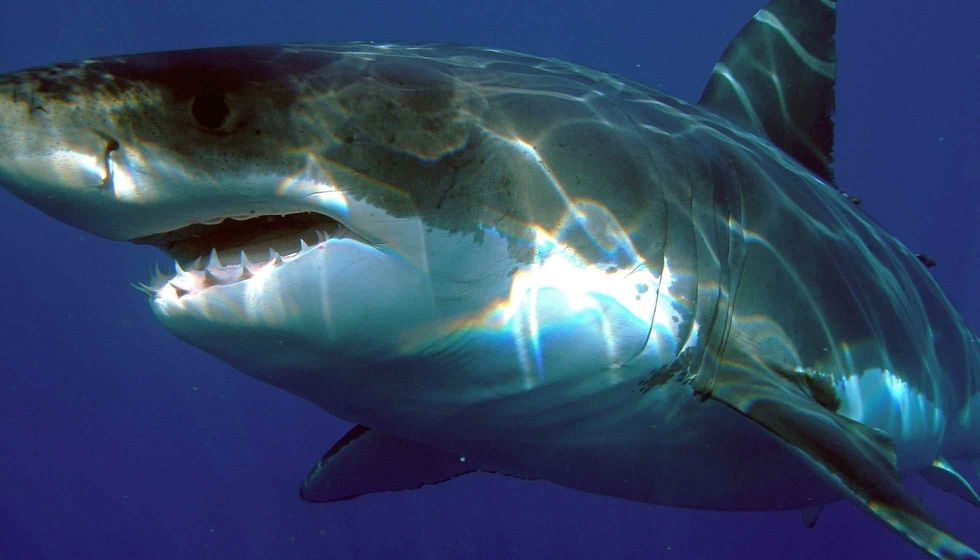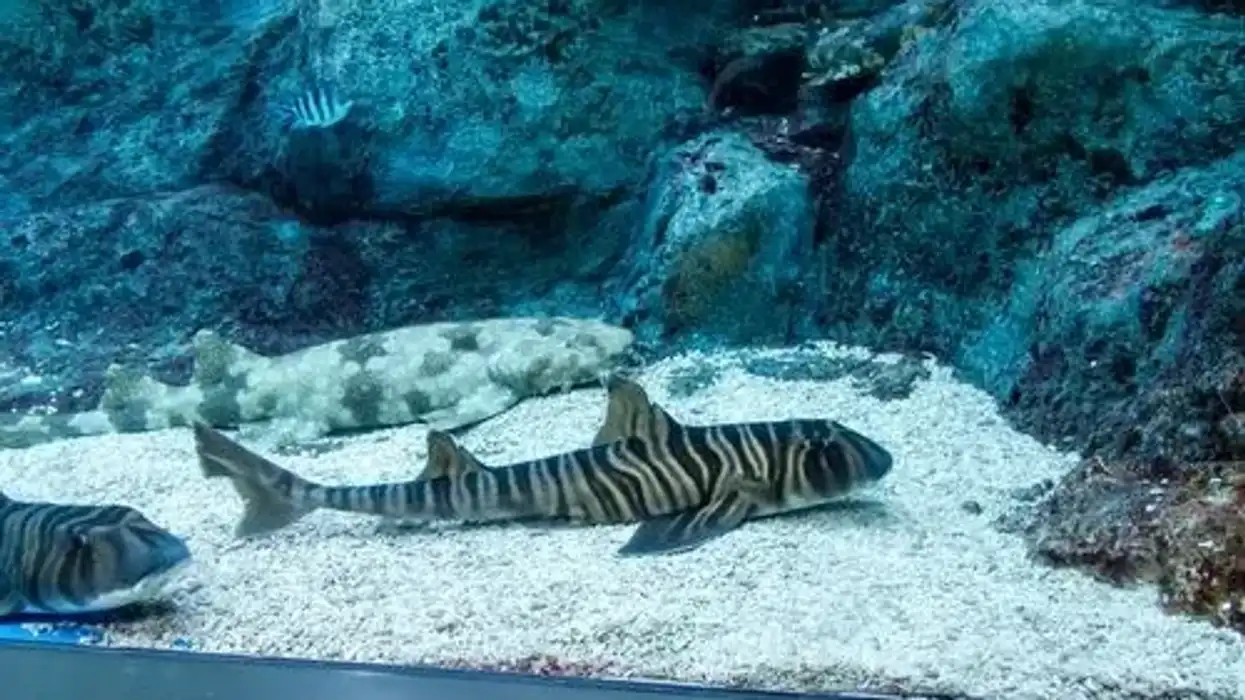A dumb gulper shark, or Harrissoni dumb gulper, is a deepwater dogfish that belongs to the Centrophorus species. The Centrophorus harrissoni is a rare and endangered dogfish with green eyes and members of this species are also called dumb sharks.
They prefer to live in deep waters. They are consumed by humans and their liver is used for making liver oil. The Centrophorus harrissoni (dumb gulper shark) can be commonly spotted along the east coast of Australia and around New Zealand.
There are many characteristics of the Centrophorus harrissoni (dumb gulper shark) that will surely intrigue you. Here are some fun, engaging, and interesting facts on these fishes that will make you keener about the dumb gulper shark. Afterward, do check our other articles on Caribbean reef shark facts and Pacific angelshark facts.
Dumb Gulper Shark Facts
What type of animal is a dumb gulper shark?
A dumb gulper shark (Centrophorus harrissoni) is a deepwater dogfish that comes under the endangered species.
They are also known as Harrison’s deep-sea dogfish, dumb shark, endeavor dogfish, or Harrison’s dogfish. This shark, from the Centrophorus species, is mostly found in their natural habitat range of the Eastern Indian Ocean and Southwest Pacific Ocean and prefers to live in deep ocean waters.
The Environmental Protection and Biodiversity Conservation (EPBC) Act has been incorporated in order to conserve dumb gulper sharks as this shark species have been listed as Endangered by IUCN.
What class of animal does a dumb gulper shark belong to?
A dumb gulper shark is a deepwater dogfish that belong to the Chondrichthyes class as they have a cartilaginous endoskeleton. They come under the Squaliformes order of the Centrophoridae family. Its scientific name is Centrophorus harrissoni. These dogfish sharks have many similarities in appearance with the little gulper shark, including the green eyes.
How many dumb gulper sharks are there in the world?
The population size of Centrophorus harrissoni (dumb gulper shark) is unknown. There are no accurate and rough estimates of the total number of dumb gulper sharks in the world.
They are rare and endangered species, hence the population is decreasing and conservation efforts are required for these sharks with green eyes as these sharks are more prone to capture as compared to midslope species. As such, landing restrictions and area closures have been introduced across various regions of Australia and New Zealand to conserve this species.
Where does a dumb gulper shark live?
A dumb gulper shark lives in oceans. They usually live in deep waters and are found in the Eastern Indian Ocean and Southwest Pacific Ocean. They are seen along the east coast of Australia and other regions like Tasmania, New South Wales, Tasmania, Victoria, Queensland, and at isolated spots and locations to the west of New Zealand.
What is a dumb gulper shark's habitat?
A dumb gulper shark prefers to live on continental slopes in the demersal zone. They are deep water dogfish that are comfortable living in deep waters at depths of 820-1260 ft (250-384 m). They are found in the Eastern Indian Ocean and Southwest Pacific Ocean.
Who do dumb gulper sharks live with?
A dumb gulper shark is a deepwater fish that prefer to live solitarily. They do not travel together and only come together for mating.
How long does a dumb gulper shark live?
A dumb gulper shark has an average lifespan of around 46 years. The range of lifespan may vary depending on the habitat.
How do they reproduce?
A dumb gulper shark is an ovoviviparous species. Dumb gulper sharks have a lower reproductive rate and they reach sexual maturity at around 12-16 years of age. After the mating process is over, a female dumb gulper shark gives birth to up to two pups at a time in a year.
What is their conservation status?
A dumb gulper shark is listed as Endangered species by the IUCN Red List. Their exact population size is unknown but it is decreasing rapidly. They are caught by commercial trawling for meat as well as for liver oil. Hence they face extinction threat and serious conservation efforts are required.
Dumb Gulper Shark Fun Facts
What do dumb gulper sharks look like?

* Please note that this is an image of a tiger shark, not a dumb gulper shark. If you have an image of the dumb gulper shark, please let us know at hello@kidadl.com.
A dumb gulper shark is a medium-sized dogfish that belongs to the Centrophordae family. They have a flattened snout and long body. Their head is long and robust with green eyes.
These dumb gulper sharks are gray to grayish-brown in color with a slender body and medium size. This deepwater shark has two dorsal fins where the first fin is larger than the second with a short spine. The caudal fin is asymmetrical in these fishes.
The teeth differ between the male and female. The males have erect upper teeth and upward-curving tips on the lowers. The dorsal fins of juveniles have a distinct blackish oblique blotch.
How cute are they?
The dumb gulper sharks are medium-sized dogfishes and are top predators of deep waters. They are not cute in appearance and rather look intimidating.
How do they communicate?
A dumb gulper shark (Centrophorus harrissoni) communicates with each other using gestures like opening the jaw and nodding the head, hence the name. They do not make any sounds.
How big is a dumb gulper shark?
The dumb gulper shark has a length of 39-43 in (99-109 cm) and hence is a medium-sized fish. This fish is almost 10 times bigger than a tetra fish.
How fast can a dumb gulper shark move?
An adult dumb gulper shark has an average speed of around 31-40 mph (50-64 kph) in deep waters of the ocean. The fastest shark is the shortfin Mako.
How much does a dumb gulper shark weigh?
The range of weight for dumb gulper sharks is usually maximized at 290 lb (131 kg).
What are the male and female names of the species?
As a dumb gulper shark is a dogfish, its scientific name is C. harrissoni. Males and females are known as male dumb gulper sharks and female dumb gulper sharks. The teeth differ between the male and female. The males have erect upper teeth and upward-curving tips on the lowers.
What would you call a baby dumb gulper shark?
A baby dumb gulper shark is called a pup.
What do they eat?
The dumb gulper sharks are carnivores. Their diet includes teleost fishes, crustaceans, squids, and cephalopods. Their predators include large fishes and humans.
Are they poisonous?
The flesh of dumb gulper sharks can be poisonous to humans. The flesh of these sharks should be boiled or dried thoroughly before consuming it.
Would they make a good pet?
These dumb gulper sharks are not suitable for keeping a pet. They are deep-water fish and prefer to live in such a habitat. It is very difficult to keep them in an aquarium because of their aggressive nature.
Did you know...
Mid-slope fishes are at lesser risk compared to upper-slope fishes. Upper slope fishes are most likely to be captured due to their vertical and local geographical distribution.
Why is the dumb gulper shark also called Harrison's dogfish?
Dumb gulper sharks (Centrophus harrissoni) are the dumbest shark species and are also called Harrison’s dogfish. They live along the eastern coast of Australia and belong to the Centrophoridae family. It is not exactly known why they are known as Harrison's dogfish.
Why is the dumb gulper shark endangered?
Dumb gulper sharks are rare and endangered species. They are caught by commercial trawling, overfishing for meat and liver oil. Their population is decreasing rapidly.
Other reasons for their depletion include the late age of maturity and low reproductive rate. The upper-slope fish are more likely to be captured. The Environmental Protection and Biodiversity Conservation (EPBC) Act has been incorporated in order to conserve dumb gulper sharks.
Here at Kidadl, we have carefully created lots of interesting family-friendly animal facts for everyone to discover! Learn more about some other sharks from our great white shark facts and blacktip reef shark facts pages.
You can even occupy yourself at home by coloring in one of our free printable dumb gulper shark coloring pages.










